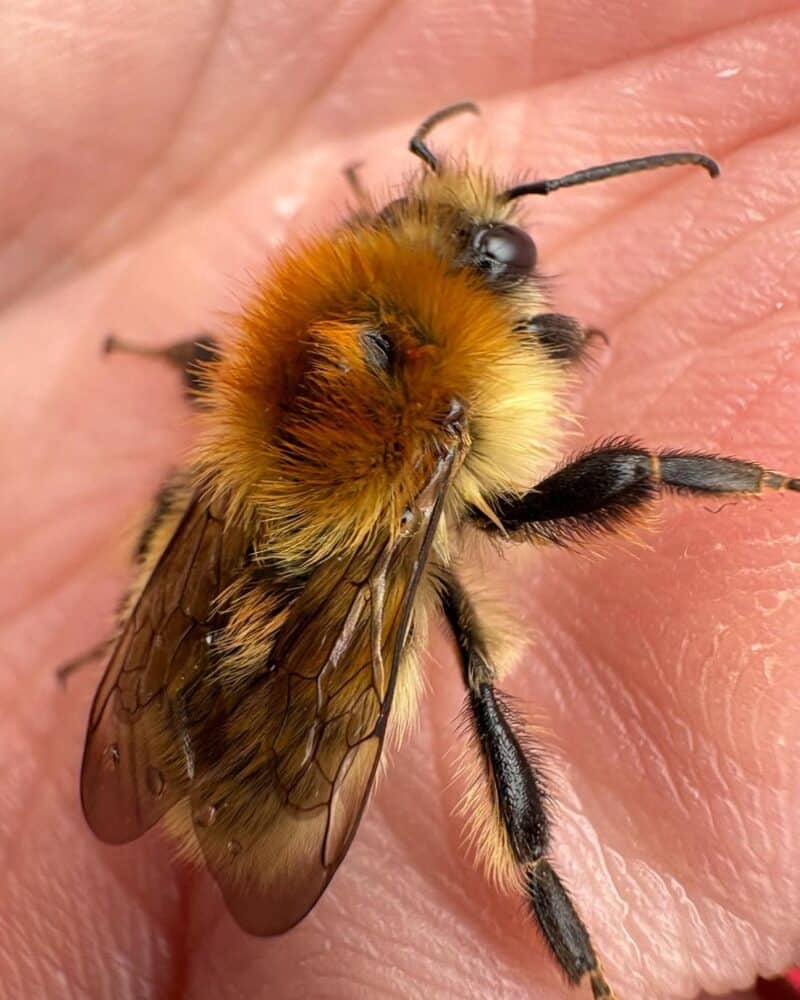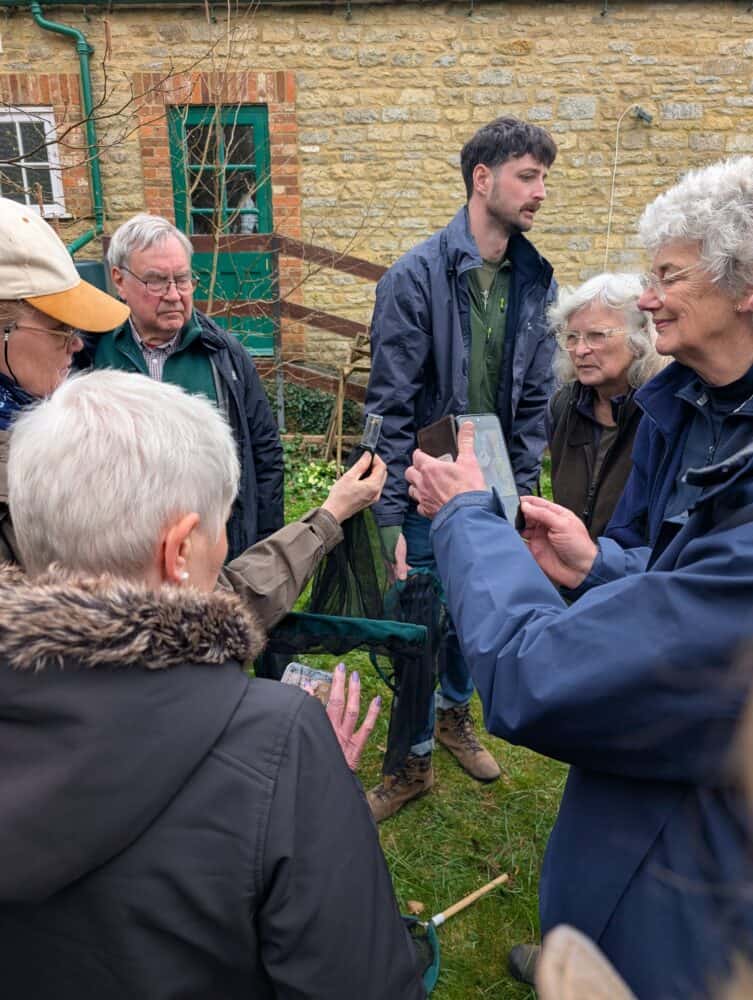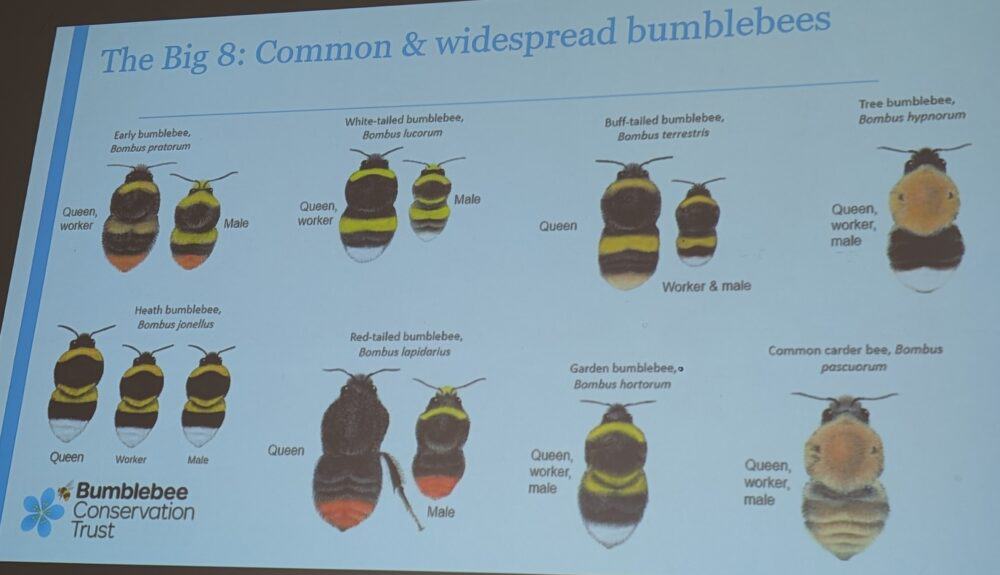Was it skill or just luck? A rare species of bumblebee was spotted on the Southill Solar farm site, just outside Charlbury, this September. The sighting of the brown-banded carder bee came during a training and observation workshop led by Andy Benson of the Bumblebee Conservation Trust, a national organisation that supports scientific research and raises public awareness.
Bees under threat
The lazy buzz of the bumblebee is as much a part of the British summer as picnicking in the rain, but it can no longer be taken for granted. Since the 1970s, habitat loss has led to big reductions in bumblebee numbers, linked to factors such as more intensive agriculture and housing development. 97 per cent of the flower-rich grassland on which they feed has disappeared in recent decades.
The fate of the bumblebee is an issue that should concern us all – they are Britain’s main pollinators. Without them there would be neither gardens nor farms.
Brown-banded carder bees resemble the much more frequently seen common carder bee, found in gardens across the country, in that both species have a splodge of orangey red hair on their backs. The unique distinguishing feature of the brown-banded carder is that it has black hairs under its wings. Its preferred habitat is chalky grassland in Wales and Southern England but these days it is a rare sight.
There are 24 species of bumblebee in Britain, only eight of them are common. Seeing any of the others is unusual to the extent that Andy felt he should check with experts in his office before positively identifying the bee we had seen as being a brown-banded carder. There was great excitement when confirmation came through several days later.
Walking set routes
The Bumblebee Conservation Trust runs a national citizen science program of ‘bee walks’ to gather data on which bumblebee species are found where and in what abundance. A hardy band of volunteers has been conducting monthly bee walks at Southill Solar throughout the spring and summer.
Data is gathered by walking three set routes across the 19-hectare site -known as transects – each about a kilometre long. The walkers move at a regular pace, counting and identifying only bumblebees seen within a width and height of two meters and four meters in front of them. These rules are there to ensure that information is collected in a consistent way to provide scientifically meaningful results from bee walks throughout the country.
More training to come
Andy ran an initial training workshop back in March to get things moving just as the bee ‘flying season’ was getting underway, with the first queen bees appearing to look for suitable places to nest. The September workshop was held to consolidate skills developed over the summer and motivate new people to get involved next year. Andy will be back next spring to lead another workshop, with a focus on getting more youngsters interested in bumblebee conservation.
Southill Community Energy, which runs the solar farm, is supporting the bee walking program as part of efforts to monitor and increase biodiversity on the site. The initiative is one of many activities taking place in Charlbury’s ‘Year of Nature Recovery’, providing a free of charge opportunty to learn in depth about bumblebees and become adept at recognising the different species.
Sustainable Charlbury has been a keen participant in the Year of Nature Recovery, giving financial support for various nature recovery projects. SusCha’s funding comes from financial surpluses generated by the sale of the sale of renewable energy produced by Southill Community Energy.


